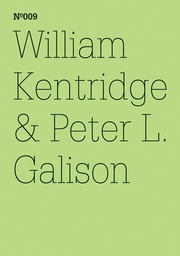| |||||||||||||||||||||||||
ARTBOOK BLOGEventsStore NewsMuseum Stores of the MonthNew Title ReleasesStaff PicksImage GalleryBooks in the MediaExcerpts & EssaysArtbook InterviewsEx LibrisAt First SightThe Artbook | D.A.P. 2025 Gift GuidesArtbook Featured Image ArchiveArtbook D.A.P. Events ArchiveDATE 2/1/2026 Black History Month Reading, 2026DATE 1/22/2026 ICP presents Audrey Sands on 'Lisette Model: The Jazz Pictures'DATE 1/21/2026 Guggenheim Museum presents 'The Future of the Art World' author András Szántó in conversation with Mariët Westermann, Agnieszka Kurant and Souleymane Bachir DiagneDATE 1/19/2026 Rizzoli Bookstore presents Toto Bergamo Rossi, Diane Von Furstenberg and Charles Miers on 'The Gardens of Venice'DATE 1/19/2026 Black Photojournalism, 1945 to 1984DATE 1/18/2026 Artbook at MoMA PS1 presents Paul M. Farber and Sue Mobley launching 'Monument Lab: Re:Generation'DATE 1/17/2026 Artbook at Hauser & Wirth Los Angeles Bookstore presents Peter Tomka on 'Double Player'DATE 1/14/2026 Printed Matter, Inc. presents Pedro Bernstein and Courtney Smith on "Commentary on 'Approximations to the Object'"DATE 1/13/2026 Join us at the Winter Atlanta Gift & Home Market 2026DATE 1/12/2026 Pan-African possibility in 'Ideas of Africa'DATE 1/11/2026 Previously unseen photographs by Canadian color master Fred HerzogDATE 1/5/2026 Minnie Evans’ divine visions of a lost worldDATE 1/1/2026 Happy New Year! | EXCERPTS & ESSAYSMING LIN | DATE 12/1/2011Documenta Notebooks: William Kentridge & Peter L. Galison, The Refusal of TimeThough not always explicit, a preoccupation with time has inherently been a factor in western works of art. Drawing from it's religious antecedents, works of the early modern period attempted to immortalize their creators, securing both the notion of the individual and the place of the artist within the canon - both essential parts of the modern nation state. Art, by providing a material imprint, acted as proof of ones existence and as a window into a higher realm of thought. For a moment, art harnessed time, froze it, and used it to project certain ideas about how society should organize itself. |
